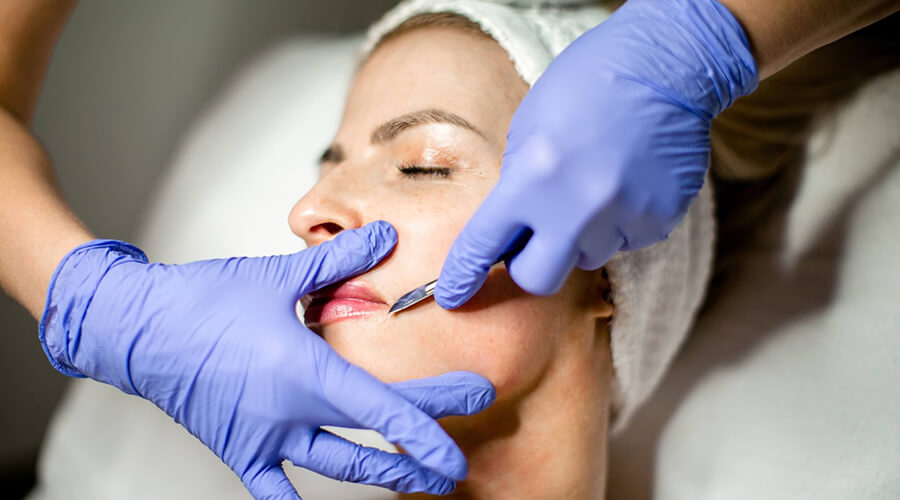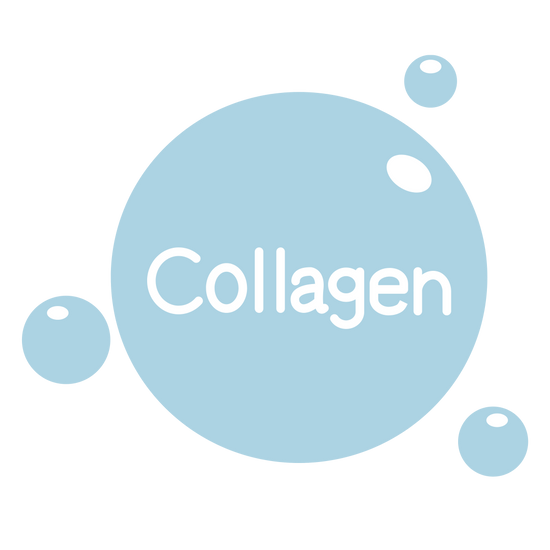
Derma-planning
Derma-planning is a cosmetic procedure that involves the careful exfoliation of the skin's surface using a sterile surgical scalpel. This treatment removes dead skin cells and fine vellus hair (often referred to as "peach fuzz"), leaving the skin smooth and radiant.
Derma-planning is an effective and non-invasive way to rejuvenate the skin, providing immediate benefits with minimal risk.
Treatment Benefits
-

Exfoliation
It effectively sloughs away the outermost layer of dead skin cells, promoting cell turnover and revealing fresher skin underneath.
-

Smoother Skin Texture
By removing the fine hair and dead skin, dermaplaning helps create a smoother canvas, making makeup application easier and more even.
-

Enhanced Product Absorption
Post-treatment, skincare products can penetrate deeper and work more effectively since the barrier of dead skin has been removed.
-

Immediate Results
Many people notice brighter and more radiant skin immediately after the procedure.
-
Safe for Most Skin Types
Dermaplaning is suitable for various skin types, including sensitive skin, and can be performed regularly to maintain skin health.
Aftercare
-
Avoid Direct Sun Exposure
For at least 48 hours after your treatment, minimize sun exposure. If you must go outside, apply a broad-spectrum sunscreen with SPF 30 or higher.
-
Gentle Cleansing
Use a mild cleanser for the first few days. Avoid harsh scrubs or exfoliants that can irritate your skin.
-
Hydration is Key
Keep your skin well-hydrated by using a gentle moisturizer. Look for products that contain hyaluronic acid or other hydrating ingredients.
-
Skip Makeup
If possible, refrain from applying makeup for at least 24 hours post-treatment to allow your skin to breathe and heal.
-
Avoid Heat
Steer clear of saunas, hot showers, and intense workouts for 24-48 hours, as heat can irritate the skin.
-
No Chemical Treatments
Avoid chemical peels, microdermabrasion, and other invasive treatments for at least a week.
-
Limit Active Ingredients
Refrain from using products with retinoids, acids, or active ingredients for a few days to prevent irritation.
-
Reschedule Your Next Appointment
To maintain the benefits of LED light therapy, be sure to schedule your next session. Regular treatments will help you achieve and sustain optimal results.
Frequently Asked Questions
What is LED Light Therapy, and how does it work?
LED Light Therapy is a non-invasive treatment that uses different wavelengths of light, such as red or blue, to penetrate the skin. Red light promotes collagen production, reduces inflammation, and enhances skin brightness, while blue light targets acne-causing bacteria. This therapy helps rejuvenate the skin, making it look healthier and more radiant.
How does LED Light Therapy help with acne?
LED Light Therapy, specifically using blue light, targets acne-causing bacteria on the skin. It reduces activity in the sebaceous glands, which are responsible for producing excess oil that can clog pores. This helps clear up acne and prevent future breakouts, while also soothing inflammation and speeding up the healing process.
Can LED Light Therapy treat eczema?
Yes, red light therapy is beneficial for treating eczema by reducing inflammation and calming irritated skin. The therapy boosts skin cell regeneration and supports the skin’s natural healing processes, making it less prone to flare-ups and reducing itching, dryness, and redness commonly associated with eczema.
How does LED Light Therapy improve skin whitening and brightening?
Red light therapy stimulates collagen production, which improves skin texture and radiance. When combined with whitening treatments like microneedling or mesotherapy, LED light therapy enhances the absorption of skin-brightening agents, reducing pigmentation and promoting a more even, brighter complexion.
How does LED Light Therapy help with anti-aging?
Red light therapy is highly effective for anti-aging. It stimulates fibroblasts, the cells responsible for producing collagen and elastin, which help maintain skin’s firmness and elasticity. Regular treatments reduce the appearance of fine lines, wrinkles, and sagging, leading to a more youthful, plump complexion.
How many LED Light Therapy sessions are needed to see results?
The number of sessions depends on your specific concern:
- For acne: 1 to 3 sessions per week for 4 to 6 weeks.
- For eczema: Regular sessions, typically once or twice a week.
- For whitening and brightening: Combined with microneedling or mesotherapy, treatments are recommended every 2 to 4 weeks.
- For anti-aging: A series of 6 to 8 sessions over a few months provides optimal results
Is LED Light Therapy safe for all skin types?
Yes, LED Light Therapy is safe for all skin types and tones. It is non-invasive, painless, and does not contain harmful UV rays. However, consulting with a skincare professional is recommended to tailor the treatment to your specific skin condition.
Are there any side effects or downtime after LED Light Therapy?
LED Light Therapy typically has no downtime, and side effects are minimal. After treatment, you may experience slight redness, but this usually subsides within a few hours. The treatment is gentle enough for regular use and can be incorporated into a variety of skincare routines.
Can I combine LED Light Therapy with other treatments?
Yes, LED Light Therapy can be combined with other treatments such as microneedling or mesotherapy for enhanced results, especially for whitening, brightening, and anti-aging. Combining treatments helps to target deeper layers of the skin, improving overall effectiveness.
Is LED Light Therapy safe for all skin types?
Yes, LED Light Therapy is safe for all skin types and tones. It is non-invasive, painless, and does not contain harmful UV rays. However, consulting with a skincare professional is recommended to tailor the treatment to your specific skin condition.
Are there any side effects or dangers of light therapy?
LED Light Therapy is generally considered safe, non-invasive, and painless with minimal side effects. It doesn’t use harmful UV rays, making it safe for regular use on all skin types and tones. However, some mild side effects or precautions to consider include:
Potential Side Effects:
- Temporary Redness or Swelling: After a session, some people may experience slight redness or swelling, but this usually subsides within a few hours.
- Dryness or Tightness: A temporary feeling of dryness or tightness may occur, especially after multiple sessions.
- Eye Sensitivity: LED lights are very bright, so eye protection is usually provided to avoid discomfort or irritation to the eyes.
Precautions:
- Sensitive Skin: Individuals with very sensitive skin may experience increased redness or irritation, though this is rare.
- Photosensitivity: Those taking medications or using products that cause photosensitivity (such as retinoids) should consult a healthcare professional before undergoing LED Light Therapy, as it could increase skin sensitivity to light.
- Chronic Skin Conditions: People with severe skin conditions or a history of photosensitivity disorders should seek advice from a dermatologist before starting treatment.
Overall, LED Light Therapy is widely considered safe when used as directed, with few risks and no downtime required.



